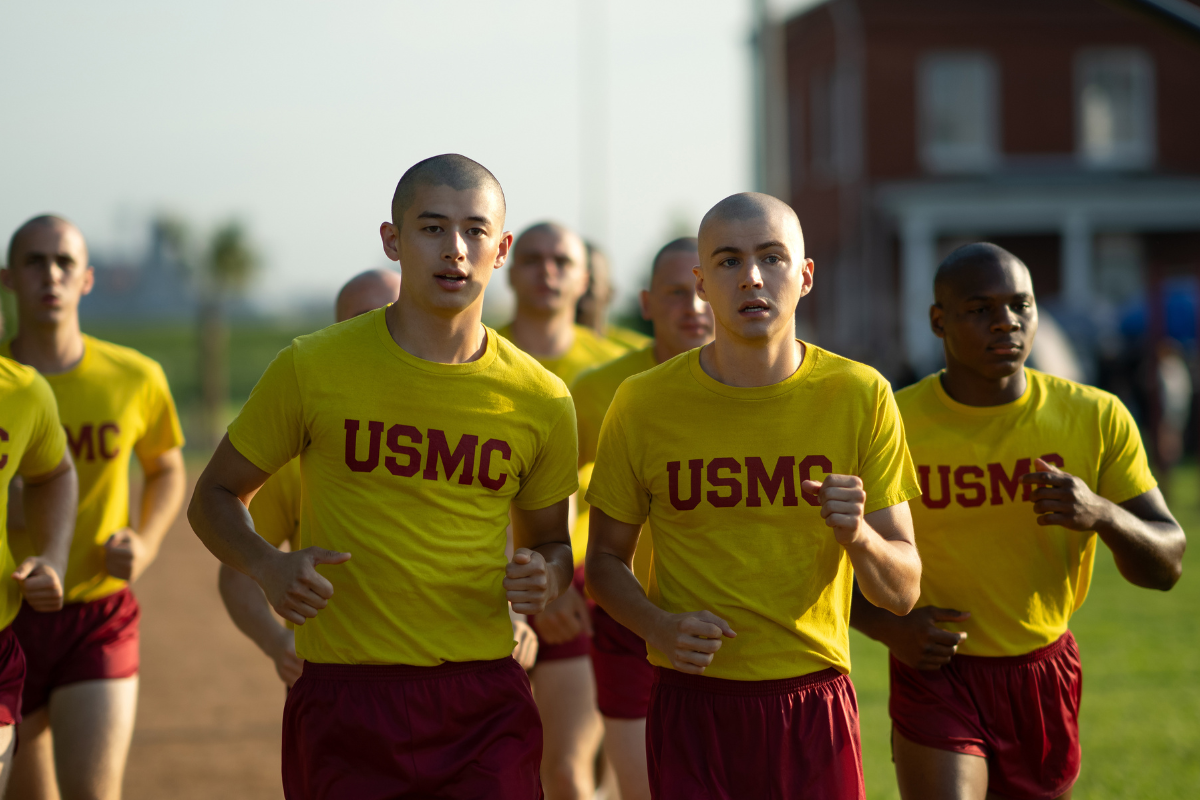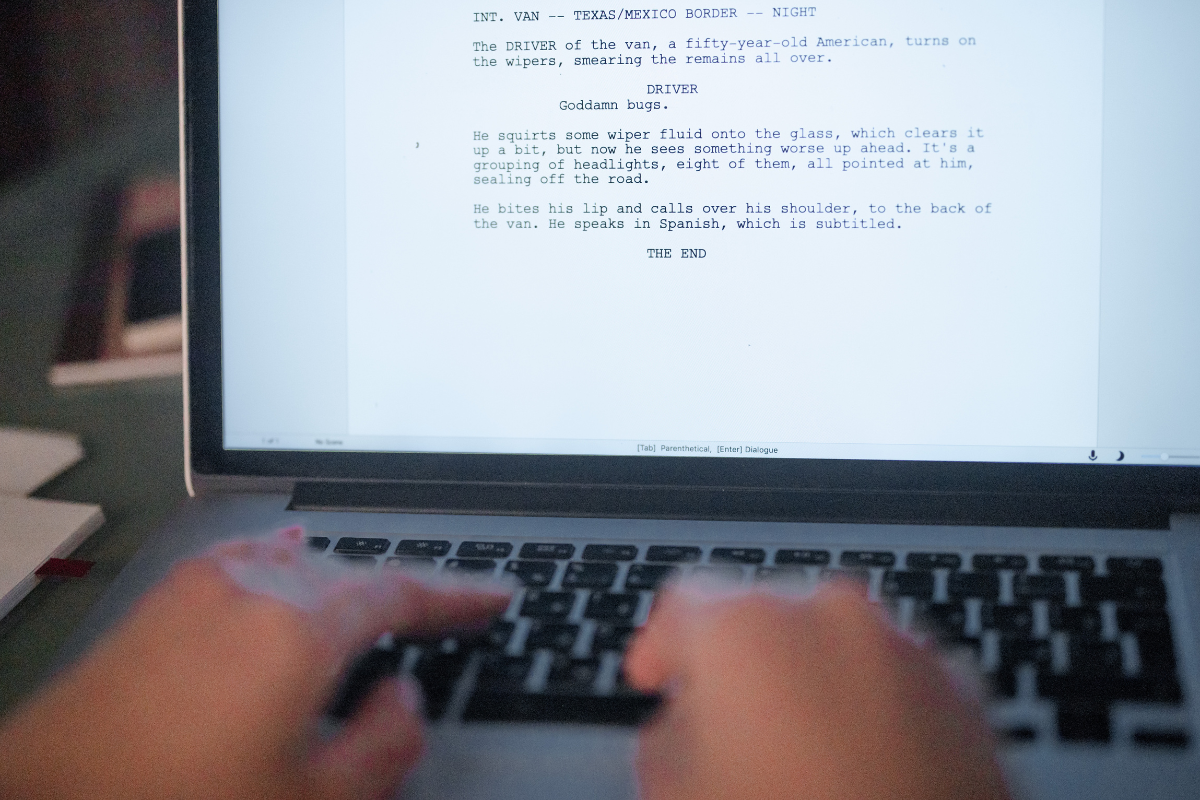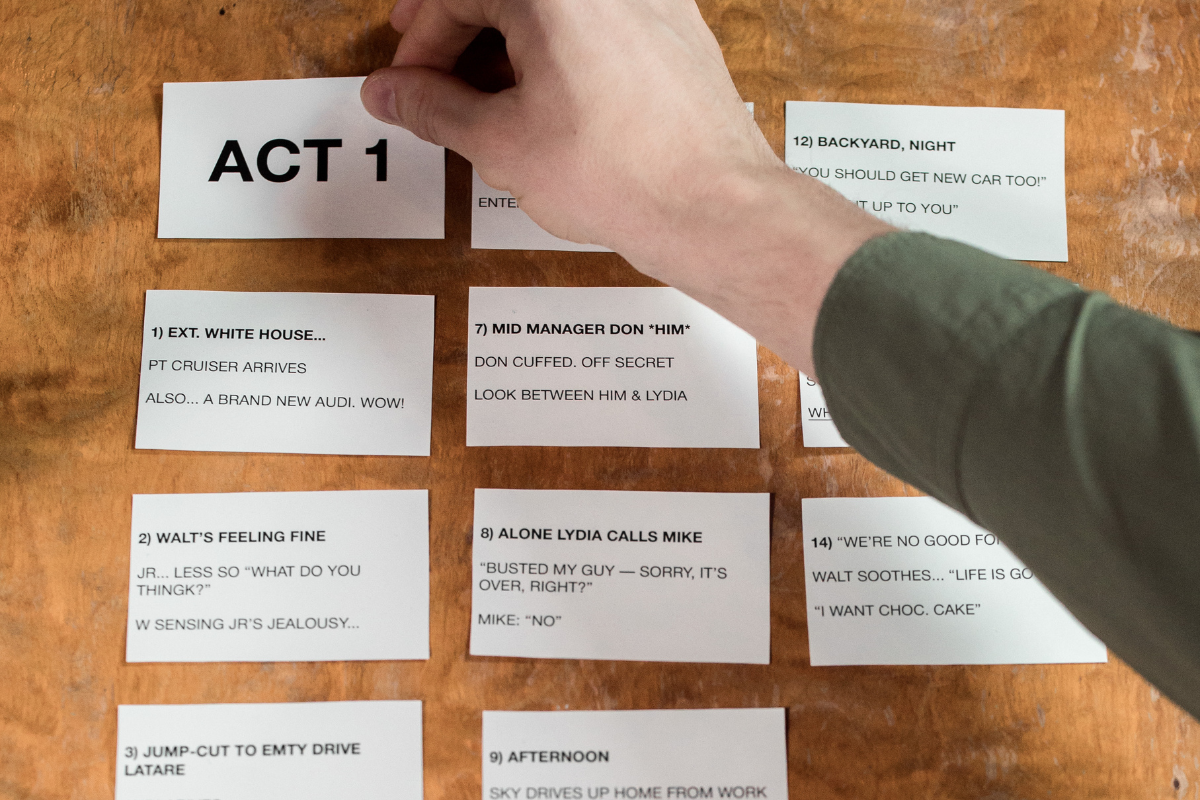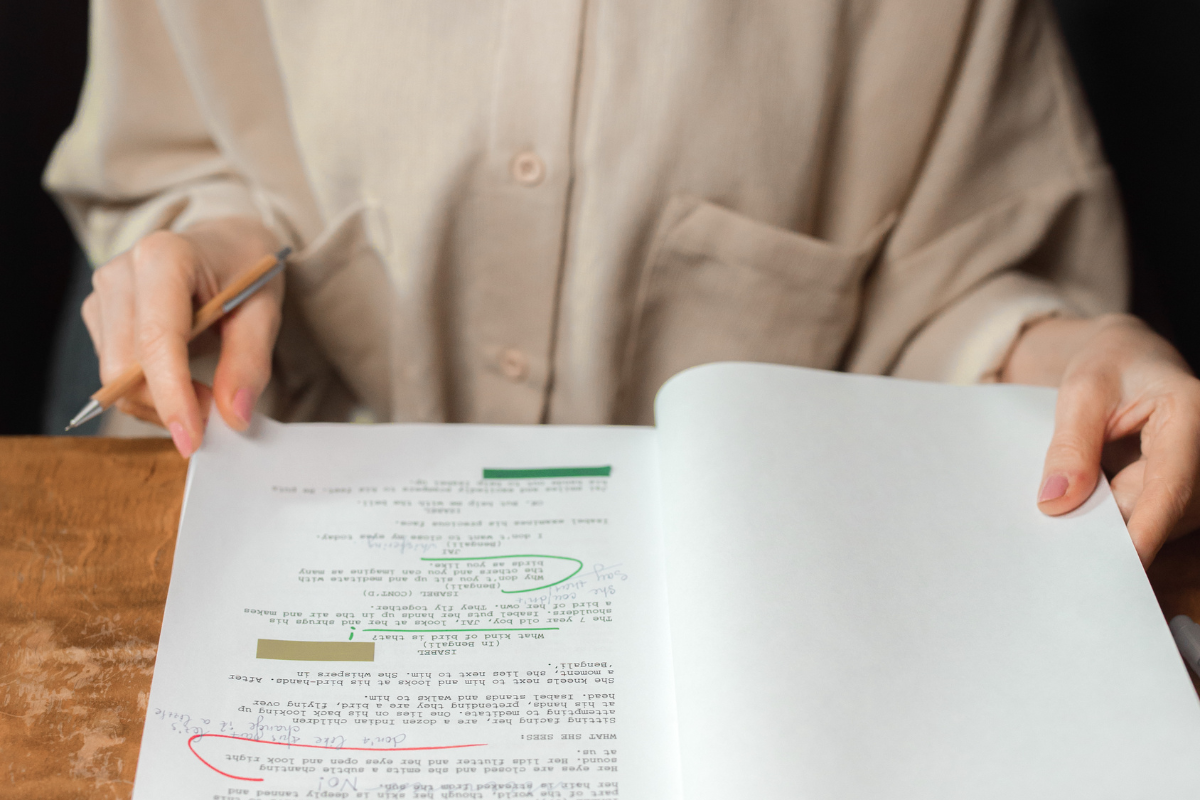LEGALLY SPEAKING, IT DEPENDS: The Character of Characters
Entertainment Attorney Christopher Schiller explores the intricacies of creating characters, from legal rights to actor portrayals and more.
Christopher Schiller is a NY transactional entertainment attorney who counts many independent filmmakers and writers among his diverse client base. Follow Chris on Twitter @chrisschiller.
"He's such a character," isn't an insult when you're a writer. Often it's a compliment. You've created a memorable, albeit fictional, person – recognizable, relatable, and real in many ways. Just how real they become and how much of their makeup is really yours are interesting questions. I wish I could say they were easily answered questions, but as always, it depends.
This article will be written a little differently, more essay-like, than previous ones. I would love to be able to give you links to definitive cases or examples of how each idea sits in the current thinking of the industry. Unfortunately, though movies have been creating characters for their entire existence there is a lot of grey area involved in the discussion of who owns and controls the characters created there. So if you'll indulge me this time, I'll daintily traipse through the mine field with bits of information here and there, some of my own opinion and some trends as I see the fictional character arena. Hopefully it will be entertaining if not quite as strictly informative as usual.
The character of the law
You would think that I would start out by discussing the relevant court cases that provide a solid grounding for interpreting the state of fictional character copyright in the law. But there are scant few solid cases to point to and even my favorite jurist, Judge Learned Hand, who is credited with establishing a “standard” for fictional character protection (in Nichols v Universal Pictures Corp., 45 F.2d 119 (2nd Cir. 1930)) could at best only vaguely point in a general direction.
“...there is a point in this series of abstractions where they are no longer protected, since otherwise the playwright could prevent the use of his "ideas," to which, apart from their expression, his property is never extended. Holmes v. Hurst, 174 U.S. 82, 86, 19 S. Ct. 606, 43 L. Ed. 904; Guthrie v. Curlett, 36 F.(2d) 694 (C.C.A. 2). Nobody has ever been able to fix that boundary, and nobody ever can.” (Emphasis mine.)
“But we do not doubt that two plays may correspond in plot closely enough for infringement. How far that correspondence must go is another matter. Nor need we hold that the same may not be true as to the characters, quite independently of the "plot" proper, though, as far as we know, such a case has never arisen. ... It follows that the less developed the characters, the less they can be copyrighted; that is the penalty an author must bear for marking them too indistinctly.”
Setting the vague guidelines for character protection above, he decided against finding a distinct enough character in the case at hand.
And so the blurry lines of distinction have carried through most of case law. The only places where courts make sure steps are when it's so obvious that they can just assume the right exists (e.g. Mickey Mouse – though even there, don't look too closely or there'll be trouble) or it's obviously too indistinct to even bother with argument and denied. Anything close to the line is avoided like the plague. Some lawyers revel in such obscurity of detail in the law, others run to the hills and pretend it doesn't exist. Neither is a settling approach to the subject, especially for the creators of characters.
Legal character references
And it becomes problematic when other court decisions on related but distinct subject matter (at least in the minds of the deciding tribunals) dictate with broad strokes areas of the law that could potentially touch on the status of character protectability. In my opinion (and I've had several hot debates with colleagues that disagree with me here), a recent case could have such an impact.
The case is the recent 9th Circuit en banc review of Garcia v. Google which you might recall is about the actress who tried to get the film she acted in taken down from YouTube citing her copyright in her performance being infringed. Besides being a very interesting case on the on-point issues (for the record, I wholly side with Judge Kozinski on his dissent and his previous decision. I am in the minority among my friends.) the language in the case makes broad, sweeping statements that have potential impact on lots of other aspects of copyright protectability of material used in the film world. The court relied on an interpretation of copyright by the Copyright Office to find the actress did not have a claim.
The Copyright Office explained that its “longstanding practices do not allow a copyright claim by an individual actor or actress in his or her performance contained within a motion picture.” Thus, “[f]or copyright registration purposes, a motion picture is a single integrated work. . . . Assuming Ms. Garcia’s contribution was limited to her acting performance, we cannot register her performance apart from the motion picture.” - from the en banc Opinion 5/18/15 (emphasis mine)
The court used the Copyright Office's guidance to inform their decision that she had no copyrightable stake in the film, since a film is a single copyrightable entity.
I understand the rush to get to a point to throw out a claim that is felt to not be meritorious, but, there are consequences in making broad stroke opinions like this. What happens to the copyrights in the script, the movie posters, the choreography, art direction and every other normally copyrightable element that goes into creating a single end work? Those all still exist if the final product is going to the stage. They suddenly disappear if the end product is an audio visual work? I don't think this is what the 9th Circuit intended, but, you can see a way of arguing that from this opinion.
How characters are affected
Lawyers I respect have said that this case was rightly decided otherwise there'd be claims from every actor on a set that felt their portrayal of their part didn't come out how they expected in the finished film. I respect that idea, but, that's why we write up the acting contracts the way we do. We get permissions to use the portrayals how the producers see fit. With a properly papered production its never an issue. (The case above has huge questions as to how well it was contractually covered, questions never addressed by the court because of the tack used instead.)
With the broad stroke of declaring a film a single element, it leaves the unique characters created within a film (strictly speaking, any audio visual work) without a leg to stand on, legally. It is already impossible (in my opinion) for a U.S. “owner” of a character copyright to sue to protect it alone. It is a formality that before you can bring a copyright lawsuit in Federal Court you must have filed the copyright at issue in the Copyright Office. But there is no form you can use to file for a fictional character copyright. Until now, it was always assumed by the courts that decided character cases that the character copyright was somehow bundled in the film copyrights and so they didn't review things further. If a film is only a single copyright without parts, how is one to protect the characters within it? If a filmmaker does a gritty, film noir flick and suddenly an easily recognizable “Captain Jack Sparrow” character shows up to deliver Sam Spade like lines, how can the powers that be sue? (There are ways, believe me so don't try it, but, you get my point.)
The originality of character
Those issues aside, let's look at the elements necessary for copyright protections for creations, characters included. The first big element necessary is originality. There needs to be something that sets the subject apart from everything else in the same medium. Sometimes this is straightforward, sometimes the courts will surprise you. Usually this requires only something barely above de minimis effort, but, there was a recent French court that found that there was insufficient originality in an art photograph of Jimmy Hendrix smoking a cigarette to enable copyright protection to prevent an e-cigarette ad to use an altered version of the photo in an ad campaign.
Harking back to Judge Hand's definition, the creator has to provide “enough” distinction for the character to make the claim. The more the better, though how much is sufficient …?
Fixation on character
Fixation in a tangible medium of expression is the next big element required for copyright protection of something. Sometimes that's as simple as typing words on a page. But fixation can become complex and provide actually contestable legal questions if not done just so. Take the fixation requirement for a film, a big issue in the 9th Circuit decision above. It turned out to be a big factor in denying the actress her claimed right because she has no control over the fixation of her performance. The court assumed the production company had the control over when the camera rolled and sound was recorded. But did they? I've worked on enough sets to know that the “control” issue is a bit fluid here. Just when the camera starts and stops is not always in sync with the director's requests. I've been involved in shoots where the footage we ended up using was taken from moments that the director wasn't even aware that the camera was rolling, but, the performer was already giving a tear jerking performance perfect for the film moment.
Usually we cover those grey areas with contracts that convey all creative choices made by the crew to the ownership of the production. But on sets where the legal paperwork isn't as solid the holes start to show, if you look. Who's to say that the grip who takes over for the sound guy while he goes to the bathroom has the right sections in her contract that assigns her recording efforts to the producer? If not, does the grip/sound person now have a copyright? Not according to the 9th Circuit at the moment, but, if shooting in Canada, say, she might have a case.)
In my opinion (you've seen that a lot in this article, haven't you?) I think basing fixation on control or authorization is a trap that detracts from “legitimate” copyright instances. Looking to the whole “bootleg” area of the law (where an unauthorized fixation has occurred) shows some of the pitfalls involved in these questions.
Creating what matters to characters
As this column goes live I am currently on set for my short film (if all is going as planned) and I'm in control of rolling cameras capturing the portrayals of the five characters I have created for it. I wrote the script, but I collaborated with the actors with how those characters could best be made real. In the spirit of what is attributed to John Huston conveying on the set of The Other Side of the Wind, I prepare so I can expect to be surprised on set with portrayals and moments I could never have dreamed of. Will I worry about who actually owns the fictional character copyright of the resultant works? Not in the least. Hopefully I have papered over enough protection in my contracts. Right now I'm most worried about making as good a film as we possibly can for the audience to come. If these characters have a life after this project it will be a testament to how well I did my job in the first place, regardless of who eventually owns them. And that's alright by me, since, as in everything, it depends.
- More articles by Christopher Schiller
- Creating Characters: The Behavioral Paradox
- Back to the Chalkboard: Get Shorty - The Long View on Short Scripts
Get insights into contracts with Entertainment Attorney Christopher Schiller's webinar
Screenwriter Contracts Decoded
Christopher Schiller is a NY transactional entertainment attorney who counts many independent filmmakers and writers among his diverse client base. He has an extensive personal history in production and screenwriting experience which benefits him in translating between “legalese” and the language of the creatives. The material he provides here is extremely general in application and therefore should never be taken as legal advice for a specific need. Always consult a knowledgeable attorney for your own legal issues. Because, legally speaking, it depends... always on the particular specifics in each case. Follow Chris on Twitter @chrisschiller or through his website.







